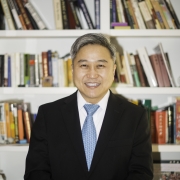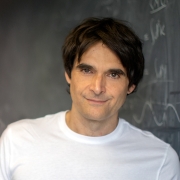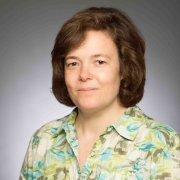Penn Researchers Develop New Type of Liquid Crystal
Liquid crystals combine the optical properties of crystalline solids with the flow properties of liquids—characteristics that come together to enable the displays found in most computer monitors, televisions, and smartphones.
In a study published in the Proceedings of the National Academy of Sciences of the United States of America, researchers from the University of Pennsylvania and Swarthmore College describe new research into a type of liquid crystal that dissolves in water, rather than avoids it like the oily liquid crystals found in displays. This property means that these liquid crystals hold potential for biomedical applications, where their changing internal patterns could signal the presence of specific proteins or other biological macromolecules.
At even higher concentrations, the liquid crystals display an even more unusual behavior: Their constituent molecules stack to form columns that organize into crystal-like structures and transform the normally spherical water droplets into faceted fluid gemstones.
The research was led by postdoctoral fellow Joonwoo Jeong and graduate student Zoey Davidson, both members of Arjun Yodh’s research group at Penn. Yodh directs the Laboratory for Research on the Structure of Matter and is James M. Skinner Professor of Science in the Department of Physics and Astronomy in Penn Arts and Sciences. Rounding out the collaboration are Christopher H. Browne Distinguished Professor of Physics Tom Lubensky at Penn and Peter Collings, a professor in the Department of Physics and Astronomy at Swarthmore.
Their long range goal is to gain better understanding and control over this liquid crystal system in order to harness its abilities to make useful new materials.
The research was supported by the National Science Foundation and Penn’s Materials Research Science and Engineering Center.
Read the full story here.





